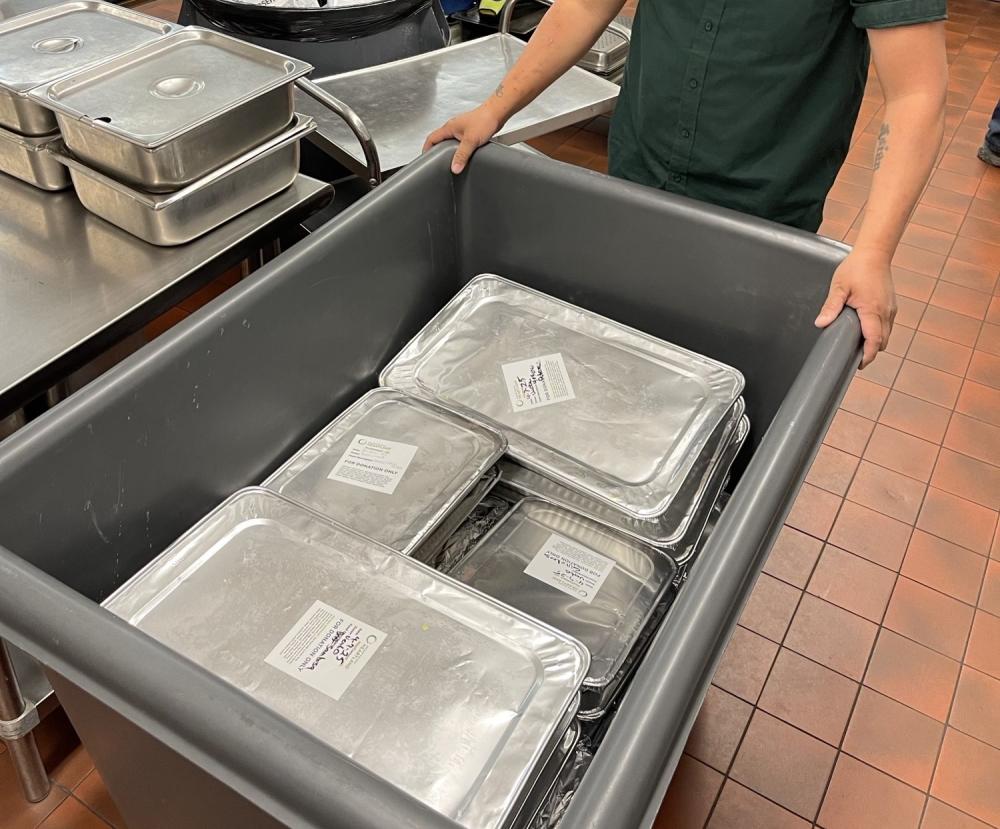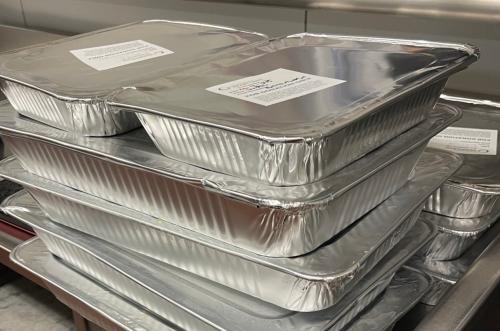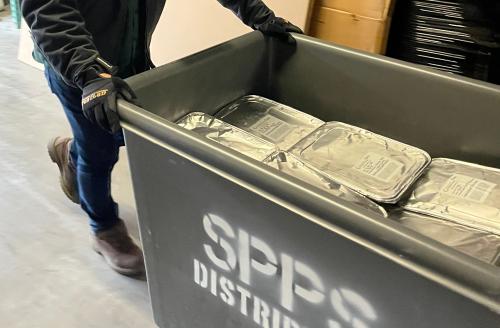
How Saint Paul Public Schools is Helping End Hunger through Food Rescue
School meals are an important tool in the work of solving child hunger. And with 26% of households with children in Minnesota experiencing food insecurity, they are more important than ever. But what happens to the excess food at schools that isn’t served to students? In the case of Saint Paul Public Schools, that food is donated to the hunger-relief system. “Everything that we have on our menu—down to the ingredients—is something that we are willing to and have been donating,” explained Stacy Koppen.
As director of Nutrition Services for the school district, Stacy oversees the staff who are responsible for planning, preparing, and serving school meals. She says the partnership between Saint Paul Public Schools and Second Harvest Heartland has been going on for over a decade. Initially, the organizations worked together to brainstorm ways to alleviate food insecurity in schools until the pandemic hit, at which time, “Second Harvest [Heartland] was really critical and were working with us to help identify resources for not only the needs that we had, but also for our families,” said Stacy.
Along with the work of making sure students and families are fed, Saint Paul Public Schools has also been a Second Harvest Heartland partner in prepared food rescue for several years, using Feeding America’s Meal Connect program to alert hunger-relief partners of opportunities to collect donations of prepared food and ingredients. “We have really great partners, but our partners do rely usually on volunteers and, just for a number of reasons, donations weren't being picked up, either due to the large size or a lack of driver volunteers,” said Stacy.

Prepared food donations packaged and ready for delivery. Photo courtesy of Saint Paul Public Schools.
To help solve this issue, the school district was recently awarded a grant through the Minnesota Pollution Control Agency (MPCA) to support their food rescue efforts. “[This grant] is allowing us to use some funds from MPCA to pay for Saint Paul Public Schools to use our vehicles and our staff to deliver our surplus foods to charities in the area,” said Stacy. “This is really innovative, and the trajectory of the food donations has gone to a new level because of this grant opportunity.”
Second Harvest Heartland helped Saint Paul Public Schools set up a standing relationship with local nonprofit Catholic Charities Twin Cities to accept their food donations daily to use in meal programs. “Basically, we work internally to identify where our surplus foods are,” said Stacy. “We develop a route for our drivers to go and retrieve that food and then they drop that food off at Catholic Charities.” Since the new food rescue project launched in December 2024, Saint Paul Public Schools have donated more than 50,000 pounds of food. Everything from bulk grains, produce, and frozen food, to prepared food at the end of daily meal service has been put to use in meals for those facing hunger.

Prepared food donations are now being transported by school district staff. Photo courtesy of Saint Paul Public Schools.
Stacy sees it as the role of the district to be responsible stewards of the environment and to put their energy toward getting surplus food to people that need it. “We know that so much of the waste in Minnesota is from food,” she said. “But we also really care about our children, and we also care about our families, especially those who are food insecure… This work is so critical both from the waste aspect as well as the food security aspect.”
